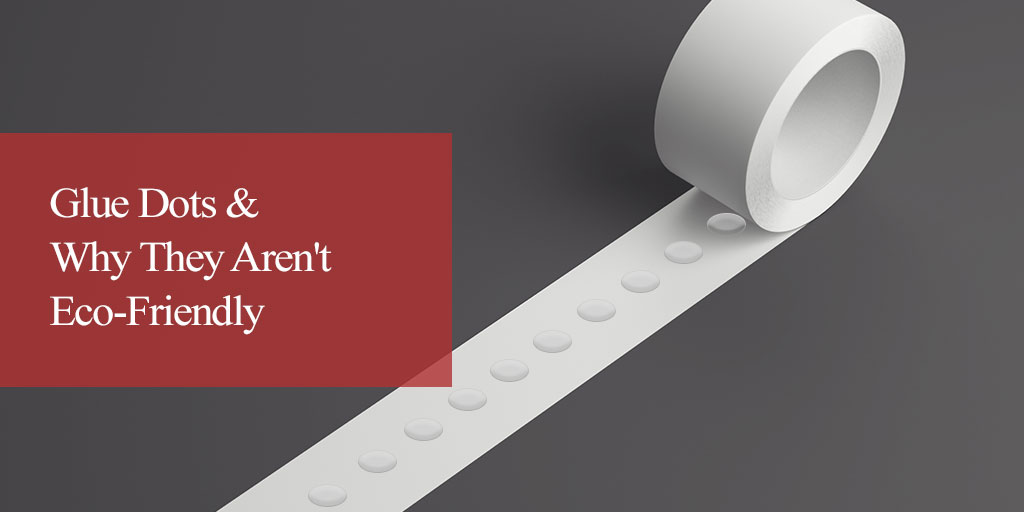Eco-friendliness and sustainability are critical considerations in manufacturing. We get a lot of companies asking about eco-friendly adhesive solutions. Let's tackle one of the most common questions we get down below:
Are Glue Dots Eco-Friendly?
The quick answer is no; glue dots are not eco-friendly.
Producers of glue dots state that their products are created using synthetic, rubber-based adhesives. Depending on the manufacturer, glue dots are generally FDA-compliant for direct or indirect food contact and conform to ASTM D-4236.
Glue dots are a type of pressure-sensitive adhesive (PSA), and there have been a lot of different formulations to create this type of glue over the years. Generally, there are three common materials used to produce PSA:
- Acrylic - To become a PSA, acrylic monomers are polymerized under heat and pressure for a period of time.
- Silicone - Silicone is a polymer made up of siloxane and is one of the most expensive types of PSA.
- Rubber - Rubber polymers need to be formulated with tackifier resins, oils, plasticizers, pigments, and antioxidants to become a PSA.
While Glue dots are non-toxic and odorless, they still use polymer and silicone ingredients that are not biodegradable or beneficial to the environment in the long term.
The Popularity of Glue Dots
Glue Dots are handy; there's no disputing it. This adhesive can be applied quickly with minimal training and leaves behind little no residue when removed. Also, glue dots don't need to be cured, allowing for quick and efficient processing and packaging.
When comparing Glue dots to other popular adhesive solutions, like hot melt, they can be a stepping block on the road to better sustainability. For example, hot melt takes time and energy to reach the proper application temperature. The equipment used to dispense hot melt requires regular maintenance, driving up costs and affecting turnaround times. Also, glue dots can’t burn operators during application.
While glue dots are not the most eco-friendly solution, they can be a better alternative depending on your packaging methods. Below are some of the most common applications for glue dots today.
- Securing envelopes, packages, and mailers
- Affixing cards, samples, promotion items to packages
- Securing items before shrink wrapping
- Holding information sheets to pharmaceutical and nutraceutical products
- Hold gift basket items in place
- Sealing food and beverage containers
- Mounting artwork
- Gift wrapping
- Packaging and product assembly
The Future of Glue Dots
Glue dots are incredibly useful in packaging and manufacturing, and glue dot manufacturers are working on creating more sustainable solutions. Some glue dot manufacturers are currently creating packaging for their products made from recycled materials.
Manufacturers like ECO-Squares™state that they created a more sustainable glue dot: "During 34 days of bio-methane potential testing, 35% biodegradation of ECO-Squares™ is shown to occur in an anaerobic environment.
As sustainability and eco-friendly become part of everyday business, we are likely to see formulas and applications for glue dots evolve with eco-friendliness in mind. If you are interested in learning more about more sustainable solutions for adhesive, contact us.






